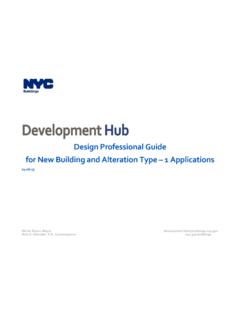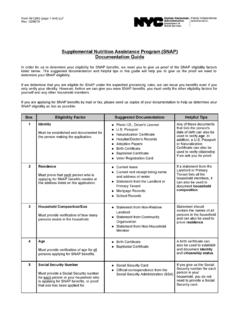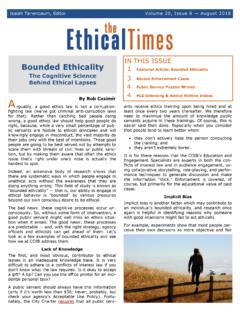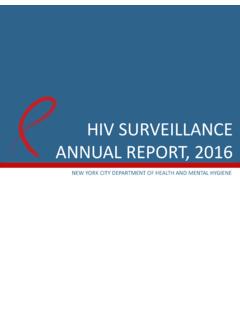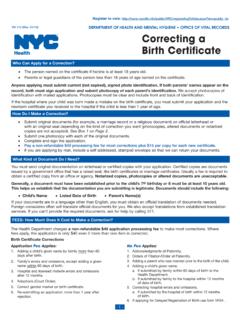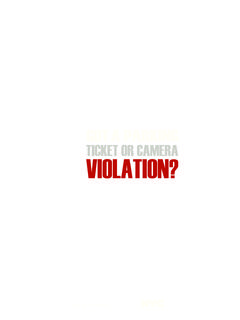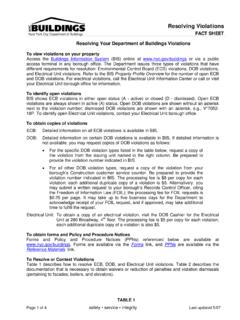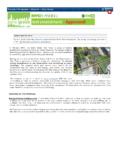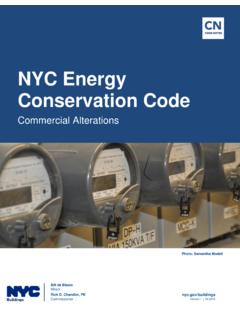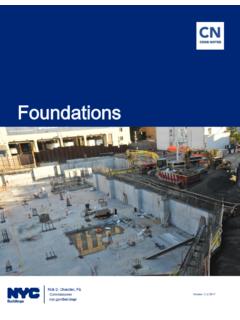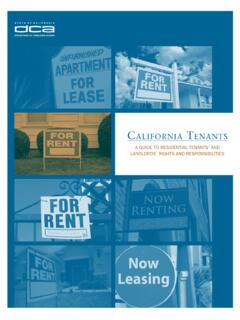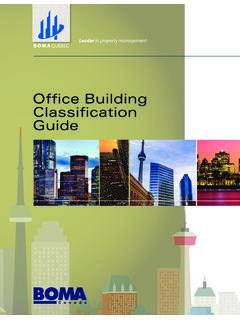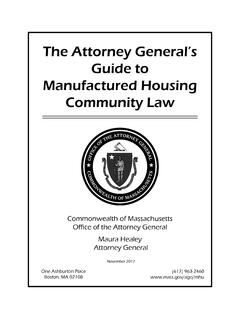Transcription of Snow Removal: Your Responsibilities
1 Sanitation Snow removal : Your Responsibilities A guide for Homeowners, Property Managers, Businesses & Residents Prepare in advance for the snow season by getting the necessary equipment, including a good snow shovel and ice melt or material to help with traction. If you live on a private street, get together with your Homeowner Association (HOA) and make sure there is a plan for snow removal . Know what is too much for you. Pace yourself when cleaning snow because it can be a physically-intensive and strenuous task. In cases of heavy snowfall, you may want to consider hiring a service or a person to clean the snow from your sidewalk or driveway. If you can, look in on and help your neighbors who are elderly, disabled, or otherwise homebound. Who is responsible for cleaning snow and ice from the sidewalk? According to the NYC Administrative Code, every owner, lessee, tenant, occupant or other person having charge of any lot or building must clean snow and ice from the sidewalks adjacent ( , in front of, on the side of, in back of) to their properties.
2 How long do I have to clean the sidewalk? If the snow stops falling between: 7:00 and 4:49 - you must clear within four hours 5:00 and 8:59 - you must clear within fourteen hours Example: If the snow stops falling at 7:00 , the owner, lessee, tenant, occupant or other person in charge of any lot or building has until 9:00 the following morning to clear. 9:00 and 6:59 - you must clear by 11:00 the next day What is the best way to clean snow from the sidewalk? Remove snow along the sidewalk adjacent to your property. Do not push snow from the sidewalk into the street. Clear the snow from around the fire hydrant if there is one in front of your property. Do not cover crosswalks with snow. You should move the snow to your front yard, behind the stoop line, or to the grassy curb strip if one exists. Where possible, try to clear a path at least four feet wide along the sidewalk.
3 Corner property owners should clear a path to the crosswalk, including any pedestrian ramps, and where the snow has melted and creates a puddle, disperse the water away from the crosswalk. This will help people in wheelchairs, people with children in strollers, students going to school, and individuals with mobility-assistance devices. EN: 11/25/2014 Who clears fire hydrants and catch basins? According to the NYC Administrative Code, the person having charge of the adjoining property is responsible for keeping the fire hydrant clear of snow and ice and any other debris or materials to ensure it is accessible during a fire emergency. While there is no specific requirement to clear snow around catch basins, they provide drainage when snow and ice begin to melt. Clearing the catch basins, and placing a channel towards the catch basin, will help prevent flooding when snow and ice begin to melt. Clearing fire hydrants and catch basins benefits everyone on the block and is something that block residents may wish to work together on to help address.
4 Why do snow plows leave a ridge at the end of my driveway? Who is responsible for clearing the ridge? Snow ridges are an unavoidable after-effect of plowing streets, particularly in larger or heavier snow storms. DSNY must plow to create a passable driving lane. While this clears a path for traffic, in times of heavy snow, it may leave a snow ridge. We appreciate this concern. However, residents are responsible for clearing any ridge in front of their driveway. We suggest driveways be cleared after street snow clearing operations are conducted and completed. It is important that snow may not be placed in the street because this could create hazardous conditions and the need to re-plow the street, which may result in the creation of another snow ridge in front of one s driveway. Placing snow in the street, if observed by Sanitation personnel, could result in the issuance of a Notice of Violation, with a fine of $100.
5 How can locations that do not clear their sidewalks be reported? Residents can make a Failure to Clean Ice/Snow from sidewalk service request to the NYC 311 Customer Service Center. Call 311 or go to Make sure the problem is on the public sidewalk (not on stoops or internal pathways) Provide a specific address Make sure the time period (listed above under How long do I have to clear the sidewalk? ) has passed since the snow stopped. What happens if I don t clear my sidewalk? Homeowners, property managers, businesses, or others, who do not comply, can face fines of: $100- $150 1st Offense $150- $350 2nd Offense $250- $350 3rd Offense and subsequent
